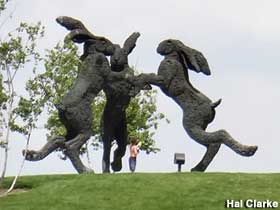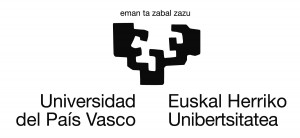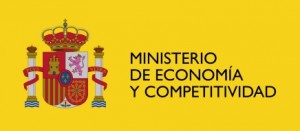Category Archives: IAS-Research
IAS-IHPST Workshop: Boundaries and Levels of Biological Organization (1-2 July 2014)IAS-IHPST Workshop: Boundaries and Levels of Biological Organization (1-2 July 2014)IAS-IHPST Workshop: Boundaries and Levels of Biological Organization (1-2 July 2014)
BOUNDARIES AND LEVELS OF BIOLOGICAL ORGANIZATION
The IAS-Research Centre for Life Mind and Society of the University of the Basque Country (EHU/UPV) in collaboration with the Institut d’Histoire et de Philosophie des Sciences et des Techniques (IHPST) of the University Paris 1 Panthéon Sorbonne École Normale Supérieure and CNRS will be hosting an international workshop in Philosophy of Biology.
The workshop will discuss the notion of biological organization from a systemic- perspective. In particular it will focus on its intrinsic hierarchical dimension, and on the role organization plays in the understanding of the transition from pre-biotic to minimal living systems and of more complex forms of biological, cognitive and ecological systems.
Dates: July 1-2 2014
Venue: Room B1 – Centro Carlos Santamaria, Universidad del Pais Vasco (EHU/UPV) Campus de Guipuzkoa
Webpage: http://ias-ihpst.ias-research.net/
For more detailed information please contact the organisers Leonardo Bich and Maël Montevil.
No registration and no fees are needed for attending the workshop. Access is free to everybody in the academic community interested in the topics of the workshop. If you intend to come, please send an email to leonardo[dot]bich[at]ehu[dot]es so that we can facilitate your entrance into the building.
PROGRAM
| TUESDAY 1st of JULY | |
| 10:00 – 10:15 | Opening |
| Session 1 | |
| 10:15 – 11.15 | Hierarchical thinking in organicist and systems biology
Jon Umerez IAS/Universidad del País Vasco |
| 11:15 – 11:40 | Coffee break and collaboration proposals |
| 11:40 – 12:40 | Levels, orders and boundaries: a look into the architecture of biological organization
Matteo Mossio IHPST/Paris 1 Panthéon Sorbonne |
| 12:40 – 14:30 | Lunch break |
| Session 2 | |
| 14:30 – 15:30 | Protocellular autonomy: getting organized through the construction of open boundaries
Kepa Ruiz Mirazo IAS/Universidad del País Vasco |
| 15:30 – 15:40 | Break |
| 15:40 – 16:40 | Heredity and organization
Gaëlle Pontarotti, with commentaries by Francesca Merlin IHPST/Paris 1 Panthéon Sorbonne |
| WEDNESDAY 2nd of JULY
|
|
| Session 3 | |
| 10:00 – 11:00 | Teleology as a principle
Nicole Perret ENS Paris |
| 11:00 – 11:40 | Coffee break and collaboration proposals |
| 11:40 – 12:40 | Failed intentions, or why adaptive behavior is not sufficient for cognition
Xabier Barandiaran IAS/Universidad del País Vasco |
| 12:40 – 14:30 | Lunch Break |
| Session 4 | |
| 14:30 – 15: 30 | On the origin of autonomy: from chemical to biological organisation
Alvaro Moreno IAS /Universidad del Pais Vasco |
| 15.30 – 15: 40 | Break |
| 15.40 – 16 :40 | Gaïa: what was it about?
Sebastien Dutreuil IHPST/Paris 1 Panthéon Sorbonne |
| 16: 40 – 16:50 | Closing remarks |
Call for a one-year post-doctoral position
Image
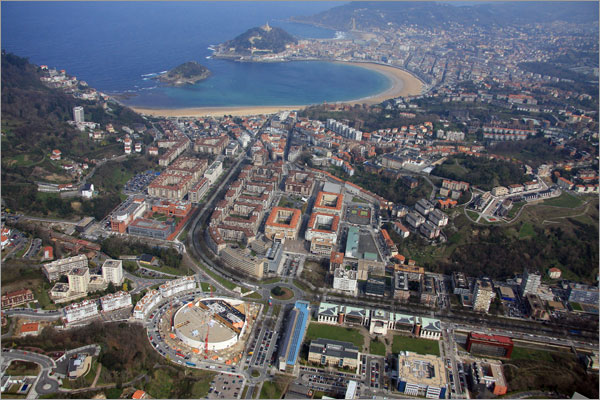 URGENT! Call for a one-year contract for a Post-doctoral position within the IAS Research group in Donostia/San Sebastián
URGENT! Call for a one-year contract for a Post-doctoral position within the IAS Research group in Donostia/San Sebastián
Applications are welcome from researchers holding a PhD degree interested in this contract, which is associated with the Research Project IT590-13 (coord.: Alvaro Moreno) developed by the IAS Research Center. The candidate is asked to have an specialization in Philosophy of Biology and familiarity with the issues and the approach of the research lines specified in the aforementioned funded Project (see below an extract) will be valued.
Along with his CV, the candidates are also asked to submit a brief research proposal (around 1000 words) according to those research lines. The grant consists in a 1-year research contract to be held at the University of the Basque Country. The holder of the contract will be expected to develop research in the specified lines. The call for this contract is issued by University of the Basque Country and details about how to apply are already published here in this link (in Spanish and Basque only). Further inquiries should be sent to Alvaro Moreno (alvaro.moreno@ehu.es) or Arantza Etxeberria (arantza.etxeberria@ehu.es). The deadline is tight, just from the 17th to the 25th of September.
“Habits as sensorimotor life-forms” – IAS-Research seminar by Matthew Egbert and Xabier E. Barandiaran“Habits as sensorimotor life-forms” – IAS-Research seminar by Matthew Egbert and Xabier E. Barandiaran“Habits as sensorimotor life-forms” – IAS-Research seminar by Matthew Egbert and Xabier E. Barandiaran
“Habits as sensorimotor life-forms: modelling self-maintaining behaviour with an iterant deformable sensorimotor medium”, Tuesday 18th June, 11am, Carlos Santamaría Building, B14.
Date and Time: 11am, Tuesday 18th June, Carlos Santamaría Building, B14
Title: Habits as sensorimotor life-forms: modelling self-maintaining behaviour with an iterant deformable sensorimotor medium
Abstract: Artificial Life has not yet explored in depth the analogy between life and mind that is hidden in the nature of habits: their self-sustaining dissipative structure as ecological sensorimotor entities. We present a new dynamical model for habits implementing what we call a node-based “iterant deformable sensorimotor medium” (IDSM). The IDSM has properties designed such that trajectories taken through state space increase the likelihood that in the future, similar trajectories will be taken. We couple the IDSM to sensors and motors of a simulated body in a simulated environment and show that under certain conditions, the IDSM resonates with the other parts of the simulation, forming self-maintaining patterns of activity operating over the IDSM, the body, and the environment. These patterns of activity are similar in many respects to habits, patterns of activity that are self-reinforced. We present various environments and the resulting ‘habits’ that form in them, studying the sensorimotor coordination patterns that stabilize in the process. We discuss how this model and extensions of it can help us understand and model self-sustaining patterns of behaviour as building blocks for a theory of cognition that does no rely on representations
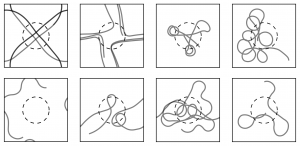
Date and Time: 11am, Tuesday 18th June, Carlos Santamaría Building, B14
Title: Habits as sensorimotor life-forms: modelling self-maintaining behaviour with an iterant deformable sensorimotor medium
Abstract: Artificial Life has not yet explored in depth the analogy between life and mind that is hidden in the nature of habits: their self-sustaining dissipative structure as ecological sensorimotor entities. We present a new dynamical model for habits implementing what we call a node-based “iterant deformable sensorimotor medium” (IDSM). The IDSM has properties designed such that trajectories taken through state space increase the likelihood that in the future, similar trajectories will be taken. We couple the IDSM to sensors and motors of a simulated body in a simulated environment and show that under certain conditions, the IDSM resonates with the other parts of the simulation, forming self-maintaining patterns of activity operating over the IDSM, the body, and the environment. These patterns of activity are similar in many respects to habits, patterns of activity that are self-reinforced. We present various environments and the resulting ‘habits’ that form in them, studying the sensorimotor coordination patterns that stabilize in the process. We discuss how this model and extensions of it can help us understand and model self-sustaining patterns of behaviour as building blocks for a theory of cognition that does no rely on representations

Websites old and new, plus season greetings
Our old website will soon disappear, but in case you want to have a look for old times sake, it is online here.
 Season greetings from Donostia and the IAS-Research Center. Photo by Phil Ladbrook.
Season greetings from Donostia and the IAS-Research Center. Photo by Phil Ladbrook.
Musical imagery from an embodied and enactive approach – IAS Research Seminar by Ximena GonzalezMusical imagery from an embodied and enactive approach – IAS Research Seminar by Ximena GonzalezMusical imagery from an embodied and enactive approach – IAS Research Seminar by Ximena Gonzalez
Ximena Gonzalez will be giving a talk entitled ‘Musical imagery from an embodied and enactive approach‘.
Date and place: 11th of December 2012, at 11.00, Room B14, Carlos Santamaría Building.
Linguistic Movement in Social Coordination: How an Enactivist Might Talk about Talking – IAS Research Seminar by Elena CuffariLinguistic Movement in Social Coordination: How an Enactivist Might Talk about TalkingLinguistic Movement in Social Coordination: How an Enactivist Might Talk about Talking
Elena Cuffari will be giving a talk entitled ‘Linguistic Movement in Social Coordination: How an Enactivist Might Talk about Talking‘
Date and place: 20th of November 2012, at 11.00, Room B14, Carlos Santamaría Building.
Abstract: In this talk I present some of my doctoral research on theories and models of co-speech gesturing in order to motivate a current project that I will also sketch out: developing an enactive theory of linguistic behavior. The conceptual toolkit that enaction offers (autonomy, adaptation, emergence, sense-making) is put to good use in response to growing recognition of the embodied and multimodal nature of high-order human communication. More specifically, I argue that the enactive perspective allows us to single out against a background of other dynamic dimensions the linguistic contributions to the sense we make in social interactions. I thus work towards what I am calling a ‘non-detachable’ philosophy of language in which we understand language as a distinct yet multifaceted sphere of reflexive coupling practices. By ‘non-detachable’ I mean that we must situate any theoretical account of language or empirical analysis of linguistic behavior firmly within a paradigm that explains the thinking and sense-making of living organisms more broadly. Within this context and informed by certain commitments and concepts, we then ask what specific contributions symbol use, abstraction, reference, and representation make to emergent shared meaning. The phrase ‘sphere of reflexive coupling practices’ indicates that linguistic behavior should be thought of as diverse phenomena unified by characteristics of intentional bodily motion through which language inhabitants appropriate, disclose, collaborate on, correct, interpret, and innovate their surroundings and shared significances.
As some video examples will show (but as passing attention to real-life experience also makes obvious!), hand gesturing while speaking is a ubiquitous practice. I suggest that from the acknowledgement that human utterances are multimodal constructions, two possible routes follow: 1) Assimilate the non-verbal modalities to models of verbal language production and comprehension. Within this tack there are a range of options and debates, but the core move is to add another dimension into a pre-existing theory or paradigm. 2) Rethink language entirely, in order to consider possibilities that may have been missed by measures made for monomodal meaning. Most gesture research describes itself as doing 2) while in practice doing 1). Which presses the question: how can we take seriously the challenge, as Adam Kendon puts it, of thinking “in terms of systems of communicative action as being at least bi-modal — kinesic and vocal always in collaboration” (Kendon 2012, 367)? Additionally to this multimodal requirement, we must also take equally seriously the quality of communicative action as being always multiplayer – thus any explanation of linguistic behavior that relies (only or mostly) on speaker intention will fall short of explaining shared sense-making, a basic attribute of what makes linguistic behavior linguistic.
The best theoretical resources for taking the second route in addressing these challenges – that is, rethinking language and linguistic behavior from the ground up – are found in the enactive cognition paradigm. I see my work as following out the leads offered by De Jaegher and Di Paolo’s definition of social interaction as social coordination (2007, 2010). To elaborate on what this might mean for linguistic behavior, I turn to the works of Maturana (1978), Pattee (1982), Polyani (1968), Gendlin (1962, 1997), and Raczawzek-Leonardi (forthcoming), which suggest related notions of linguistic symbol and linguistic behavior (coordination via symbol use) as continuous with materiality and biological life. As my project unfolds, and particularly in the context of an empirically-based project on interactive methodology that Hanne de Jaegher and I are beginning, I plan to focus on coupling, coordination, and reflexivity as traits of linguistic behavior. It may be this last, reflexivity, particularly understood as the condition for critique and sensitivity to correction, that at once connects linguistic behavior to more basic types of organismic sense-making, while also distinguishing the special capacity humans show in talking together.
“On the transition from prebiotic vesicles to protocellular membranes” – IAS Research Seminar by Kepa Ruiz-Mirazo and Sara Murillo“On the transition from prebiotic vesicles to protocellular membranes” – IAS Research Seminar by Kepa Ruiz-Mirazo and Sara Murillo“On the transition from prebiotic vesicles to protocellular membranes” – IAS Research Seminar by Kepa Ruiz-Mirazo and Sara Murillo
Kepa Ruiz-Mirazo and Sara Murillo will be giving a talk entitled ‘On the transition from prebiotic vesicles to protocellular membranes‘.
Date and place: 9th of October 2012, at 11.00, Room B14, Carlos Santamaría Building.
Abstract: It is well known that the generation of a physical border (a membrane) is a crucial step to the generation of a system with some kind of autonomy. Spatial separation of the internal and external medium allows the system to generate a minimally stable micro-environment (controlling concentration, energy-flow and osmosis) in which a metabolic reaction network could lodge inside maintaining the distinctive far from equilibrium dynamics of the autonomous systems.
In this autonomous context, in which the system has to self-constructed and self-maintained, generation of a compartment is achieved by self-assembly molecules which generates a semi-permeable barrier closely connected to the reaction network (being condition and result of it) and playing an active role in the interaction with the environment, regulating and controlling matter and energy exchanges with it.
Nowadays, these kinds of membranes are made of lipids (amphiphilic molecules that possess both polar and apolar parts) but they have a complicated generation process (which, besides, involves complex molecules). However, there is a different sort of molecules with the same amphiphilic properties which are enough simple to be present in the origin of protocellular systems, the fatty acids. Differences between amphiphile composition and mixtures with other simple molecules show differences on the stability, permeability and self-assembling capacities of such membranes. In general, more complexity means a stability profit and a permeability loss but is has been seen that mixtures of simple molecules allow a wide range of both.
Moreover, in order to be efficient and sufficiently robust, the set of endergonic-exergonic couplings underlying work production in the system has to be, in addition, well regulated. Nowadays this is carried out by enzymes, which change activation energies and regulate metabolic reactions in very sophisticated ways. But at the first stages of the origin these systems, the job ought to be done by more rudimentary catalysts, perhaps oligopeptides or smaller multimers, whose formation would be favored in the context of lipidic or fatty acid self-assembled structures, such as primitive vesicles.
In this talk we will focus on two recently published papers showing new out comings of experiments with amphiphile mixtures and our future experimental projects about insertion of small peptides in the fatty-acids membrane, based on the `lipid-peptide protocell model´ (Ruiz-Mirazo & Mavelli, 2008) previously in sillico developed.
Autonomy and Individual Organisms in Biology: A Collaborative PerspectiveAutonomía y Organismos Individuales en Biología: Una Perspectiva Colaborativa
The IAS-Research Center for Life,Mind, and Society organises a workshop on “Autonomy and Individual Biological Organisms“, to be held in San Sebastián on October, 27-28, 2012. You may find all the information about the event at https://aiob.ias-research.net/.
The IAS-Research Center for Life, Mind, and Society organises a workshop on “Autonomy and Individual Biological Organisms“, to be held in San Sebastián on October, 27-28, 2012. You may find all the information about the event at https://aiob.ias-research.net/.

“Mechanisms in the Sciences: A Field Guide” IAS-Research Talk by Federica Russo
Dr. Federica Russo will give a talk entitled “Mechanisms in the Sciences: A Field Guide“.
Date and Venue: 12th of June, at 15:00, Room B14 – Carlos Santamaria.
Abstract:The philosophical literature mechanisms is growing rapidly. In this seminar, I will try to offer a panoramic view of the main issues involved. In particular, I will consider (i) why mechanisms gained popularity, especially in connection with causality and explanation; (ii) the distinction between mechanistic reasoning and evidence of mechanisms; (iii) the disputed ‘Russo-Williamson Thesis’ and its consequences for monistic and pluralistic approaches to conceptual analysis; (iv) the role mechanisms play in (some) scientific contexts.

